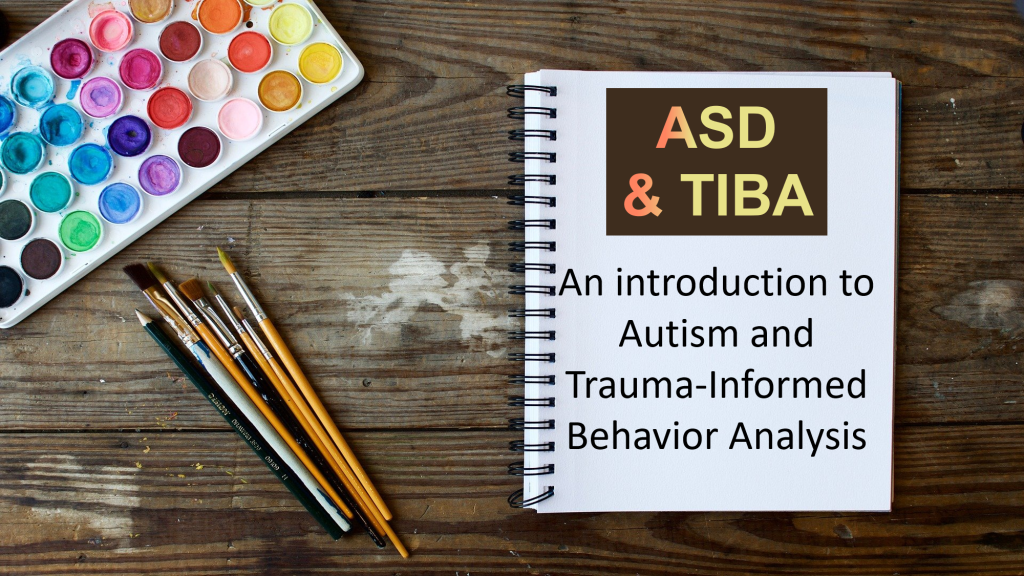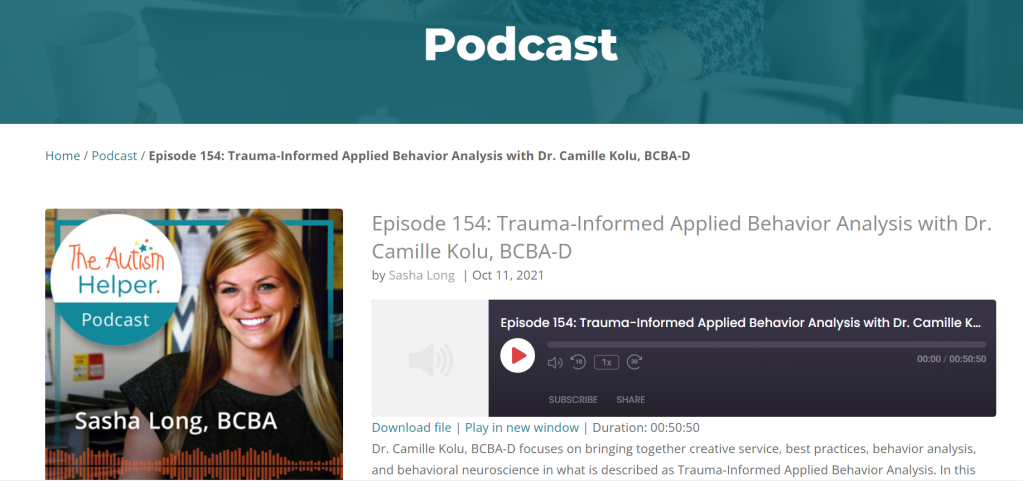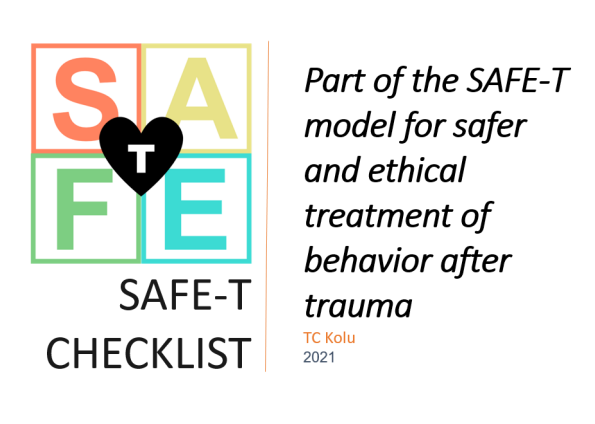Last time I wrote, I shared some ideas about this intersection. Today, the new course is up! Before you go check it out (and claim your February 2022 coupon for 20% off by typing ASD2022)– during the introductory month of the course)- learn why I’m so passionate about screening for trauma in a population so many behavior analysts have been working with (for some, virtually their entire professional lives).
Have you ever worked with someone in pain? How do we know if they’re currently hurting, whether it’s because they are sick, it’s related to interventions we chose, or from experiences we reminded them of? How would we know if that was the case? Did that person cower, freeze, or grimace? Did they flinch, close their eyes, seem to “zone out”? Perhaps someone has run away, played repetitively with the toys they had, or fallen asleep at school? Sometimes, respondent behaviors may be giveaways that people are experiencing fear or in pain, but successful avoidance behavior can hide that pain. Other times people have been through experiences making them more likely to use aggression or property destruction. In the least, we should consider whether our interventions cause harm. This harm could include causing our clients distress or pain, exposing someone to additional risks, detracting from their quality of life, failing to program in sustainable ways that transfer to the maintaining environment, and so much more.
A new training is up on Cusp.University on the intersection of autism, trauma informed behavior analysis, and ethics. By the time we near the end, we have discussed and revisited the idea of contra-indicated procedures. Given that lists exist for diagnoses of autism alone, why isn’t there a list of best practices appropriate for clientele meeting diagnostic criteria for autism who also come to therapy with trauma histories? Why is it so difficult to find articles suggesting best treatment paths for individuals with both autism and trauma related experiences in the literature? In behavior analysis, answers to these questions may be related to our field, its historical publishing practices, and the ethical and pragmatic need to individualize procedures for each client.
In terms of publishing practices, a panelist in ABAI’s “Exploring Publication Bias in Behavior Analytic Research” (which included Galizio, Travers, and Ringdahl, 2021) stated,
“No intervention is guaranteed to work for every individual, every time, in every context.”
They suggested that authors writing about their research should include more detailed descriptions of the conditions under which successful implementation of the intervention occurred.
When we screen for trauma related or aversive historical situations and stimuli, we often learn things that
- help us prioritize treatment,
- document risks for certain procedures,
- avoid or prioritize certain stimuli,
- detect environmental conditions that are acting as motivational operations and conditioned MOs,
- and ultimately, perhaps minimize harm to our client.
Screening for trauma can help to identify individuals with prior risk factors who are at risk for experiencing additional adverse events and aversive conditioning. Attendees learn in chapter 1 some facts about how being autistic is to be at increased risk for trauma, bullying, abuse, increased likelihood of experiencing foster care—and in chapter 3, learn about the higher rates of experiencing restraint, seclusion and being excluded from school.
But another effect of screening – one that should affect all behavior analysts—could be an increased awareness of the fact that behavior analytic procedures are being used all the time for this population at the intersection of autism and trauma. Perhaps the least we can do is to begin doing behavior analysis with people instead of to people, and to be transparent, inviting, and open in looking at options—and their likelihood of causing harm either now in the future.
Let’s look at this juxtaposition: we have a great ethical responsibility to do no harm, but also an ability to cause great harm. With using any behavioral procedure there comes a risk that we may do just that. This is especially true when we don’t have literature evidence that a given intervention is appropriate and effective for the person’s needs given their history and current situation. Perhaps they don’t actually need behavior analysis seeking to change their behavior as much as they need a roof, a meal, a bus pass, a blender, a respite provider, a ride to the doctor, a coat, a medication, a trip to the dentist… the list could go on and on. So clearly the first step is to see what the person needs.
When designing an individualized behavior support plan, two things are important to consider:
(1) the risks and benefits for the client themselves, given their needs, values, environment, etc., (e.g., the long- and short-term outcomes of procedures and decisions, and
(2) evidence the procedure is appropriate for our client.
In terms of evidence, when considering decisions in context of the literature, few studies provide sufficient detail in characteristics of the participants. So it is difficult to tell, reminds the panel, which characteristics were present for study participants received successful or unsuccessful interventions. Thus we can’t really tell how many of the massive number of papers on treating behaviors in autism, also apply and were conducted with individuals with autism who also had a trauma background. But statistics suggest many of them must have. In the science of behavior analysis, each subject’s behavior is its own control, so if we control our conditions and try to measure well, we may reveal additional elements of historical and current behavioral environments that exert contextual and stimulus control on the client’s behavior- and that change their needs. At times, historical aversive conditioning experiences may have contributed changes making it painful or inappropriate for clients to experience certain interventions. As we discuss in the new training, some of those conditioning experiences may even have occurred during and as part of behavioral treatment.
We can’t know for sure what our clients have been through. But when owe it to them to honor those experiences if they are comfortable sharing them.
Here are some of the things you’ll learn.
Course Objectives:
1. List connections between autism and trauma in the research
2. State different kinds or examples of trauma that may affect individuals with autism
3. State supportive ways to ask about trauma histories
4. Select examples of how medical history can be related to trauma
5. State examples of repertoires beneficial for practitioners who serve clients affected by both autism and trauma
Ready to learn more? The new training offers hints from Dr. Kolu on how we begin the conversation about informed consent and screening for trauma, why assent is so important, how trauma and autism might intersect with medical needs affecting our clients, and more. And all the resources are available as free content in the preview section, so go grab that now! See you at a conference soon or find us online. And thank you for listening!




 a
a